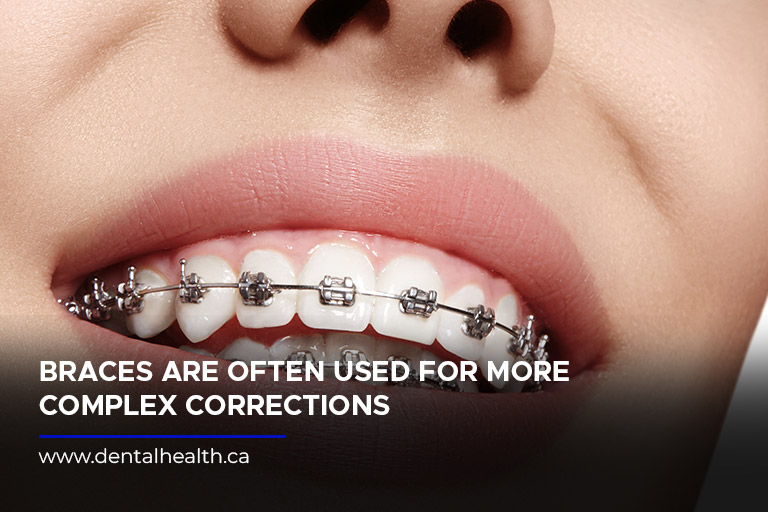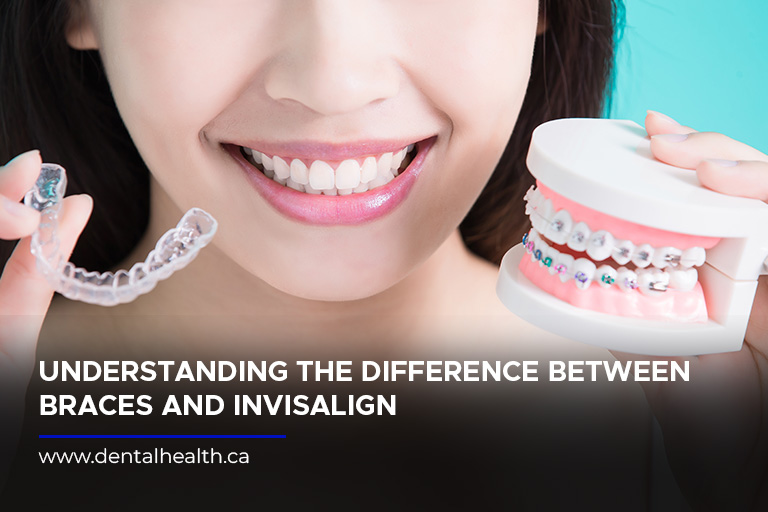Orthodontic treatment can help straighten misaligned teeth and improve the overall appearance of your smile. Braces and Invisalign are two popular orthodontic options that can help you achieve a straighter smile. However, they differ in terms of their approach, design, and maintenance.
While both options can produce excellent results, they have their own unique advantages and disadvantages. Understanding the differences between braces and Invisalign can help you make an informed decision about which treatment option is right for you. This article will answer what are the key differences between Invisalign and braces to help you choose the best option for your orthodontic needs.
Importance of Proper Teeth Alignment
Proper teeth alignment is important for many reasons. It can improve the appearance of your smile, boost your confidence, and make it easier to clean your teeth and maintain good oral hygiene. Misaligned teeth can also lead to problems such as tooth decay, gum disease, and jaw pain. By aligning your teeth, you can improve your overall oral health and reduce the risk of developing these issues in the future.
Braces and Invisalign have their fair share of pros and cons, for adults and kids alike. Let’s go through them!
What Is Invisalign?
Invisalign, a clear aligner, is a flexible plastic dental device resembling a mouthguard that you wear over your teeth. It’s removable but requires at least 22 hours of daily use. Treatment can then take 6 to 18 months. A dental scan is performed to create a personalized treatment plan, which uses a set of trays that gradually move the teeth in place. The aligners are changed at home every 2 weeks, and the dental visits are scheduled every 3 months to assess progress and deliver the next set of aligners.
Advantages of Invisalign
- Appearance
In contrast to traditional metal braces, translucent plastic Invisalign aligners are nearly invisible from a distance. The fact that transparent aligners are more discreet than braces is one of the key factors that many people choose over braces.
- Comfort
Similar to traditional braces, moving teeth with Invisalign can be uncomfortable and painful. However, Invisalign results in fewer mouth and gum issues. Unlike braces, Invisalign retainers are made of special plastic and are custom-made for each patient’s mouth, so there are often no salt washes or cuts on the inside of the cheeks to deal with.
- Ease of Brushing and Flossing
Clear aligners offer a simple dental care process where the user can remove the mouthpiece and brush and floss their teeth normally, unlike traditional braces. There is no complicated or time-consuming dental care routine required.
- Fewer Orthodontist Visits
When using Invisalign, a significant amount of the orthodontist’s work is done before wearing the aligners. A 3D scan of the teeth is then taken to create the customized retainers in a laboratory. Since there is no need to adjust the retainers, orthodontist visits are reduced to monitor progress. Fewer visits to the orthodontist result in less time off work.
- No Food Restrictions
Individuals who wear braces should stay away from hard and chewy foods, such as popcorn, nuts, and bagels, to prevent damage or irritation. However, those who use aligners do not have to avoid these foods because they can remove the aligners before eating.
Disadvantages of Invisalign
- May Require Visible Attachments
Certain individuals require tiny attachments, also known as buttons, linked to their clear aligners to help in tooth movement. They must be placed and taken out by an orthodontist, resulting in more frequent consultations, and the attachments being visible through the clear plastic.
- More Tooth Brushing
Individuals who have poor oral hygiene should avoid wearing Invisalign aligners to prevent halitosis and tooth decay. After eating or drinking, it is recommended that wearers brush their teeth thoroughly, which may increase daily brushing time due to snacking habits.
- Must Remove to Eat
When using Invisalign trays, patients are allowed to consume water but they must remove the trays when eating or drinking anything except for water. Food can damage the soft plastic of the trays, while hot or coloured beverages can cause warping and staining of the clear plastic material. Therefore, it is recommended that users take off their aligners when drinking such beverages.
- Not for Complex Corrections
Translucent aligners do not always work for every case and are usually only ideal for people who just require minor straightening.
- Requires Discipline
To achieve the desired outcome and avoid negative effects, Invisalign aligners must be worn for a minimum of 20 to 22 hours per day. Those who lack the discipline to follow this rule should avoid clear aligners. Additionally, losing aligners, which is more common in children, can be costly and prolong the treatment.
What Are Braces?

Traditional braces consist of brackets attached to the teeth that are connected by special wires. These wires and brackets gradually move and align the teeth by exerting pressure over time. To make significant progress, the braces are adjusted periodically in the clinic.
Advantages of Braces
- Multiple Options to Choose From
Metal braces are the least expensive option, but lingual and ceramic braces can also be chosen for a more discreet look. By eliminating the usual metal brackets and wires, users can achieve favourable outcomes.
- Not Easily Removed
Braces are fixed and can only be removed by an orthodontist, hence they require less maintenance than Invisalign. There’s no need to remove them before eating or wear them for a specific amount of time, making them a simple treatment option for all ages. So, if you ask which is better Invisalign or braces for adults, this may answer your question.
- Safe to Drink All Beverages
Another advantage of braces is that they are not easily stained and can withstand heat, allowing the wearer to drink coffee, tea, or other beverages without the need to remove them or worry about staining the attachments.
- Works for Complex Corrections
Braces are a widely applicable treatment for mild to severe cases, as they are attached to each tooth. They also offer more significant results than clear aligners. Even in complex cases, the result of braces is an exceptional smile.
Disadvantages of Braces
- Appearance
Some individuals are uncomfortable with the appearance of conventional braces and are concerned about feeling self-conscious in certain social situations.
- Food Limitations
Individuals who have braces should avoid certain foods like gum, bagels, hard candy, and popcorn, as they may get trapped in the brackets or potentially harm the wires or brackets. Making poor food choices can lead to discomfort and necessitate a visit to the orthodontist.
- Frequent Orthodontist Visits
Unlike some users of invisible aligners who can manage everything remotely, those with braces must attend regular appointments with an orthodontist.
- May Leave Stains
Metal brackets are typically worn for about two years and can cause differences in tooth colour after removal, but this can be remedied with good brushing and teeth whitening treatments.
- Mouth Discomfort
Metal braces can be uncomfortable and require an adjustment period. They frequently cause irritation or cuts on the inside of the mouth, making it challenging to get used to them.
Invisalign vs. Braces Cost
The price difference between traditional braces and Invisalign can be a concern. Braces are typically more affordable, ranging from $2,500 to $8,000, while Invisalign costs vary depending on the number of trays needed, ranging from about $3,000 to $8,000. Keep in mind, these prices are only estimates and are subject to change based on several factors. Consult with your provider about pricing, and check if dental insurance covers part or all of the cost. Contact your insurance provider to estimate the overall cost of braces or Invisalign.
Invisalign vs. Braces Effectiveness
Both traditional braces and Invisalign have similar effectiveness in restoring a person’s smile. The difference lies in the time, cost, and convenience of treatment. While braces are better suited for moderate to severe misalignment, including skeletal issues, they can be inconvenient and noticeable. Invisalign, are better suited for mild to severe misalignment, excluding skeletal (jaw) issues, is more convenient and has a discreet appearance. More individuals are also choosing Invisalign treatment, although its suitability depends on the severity of the condition.
Is it better to get braces or Invisalign? Well, it all comes down to personal preference and your dentist’s advice. The Kingsway Family dentists in Beamsville, Ontario is ready to provide you with treatments suited to your needs. Call now at (905) 563-4001 and book an appointment!

